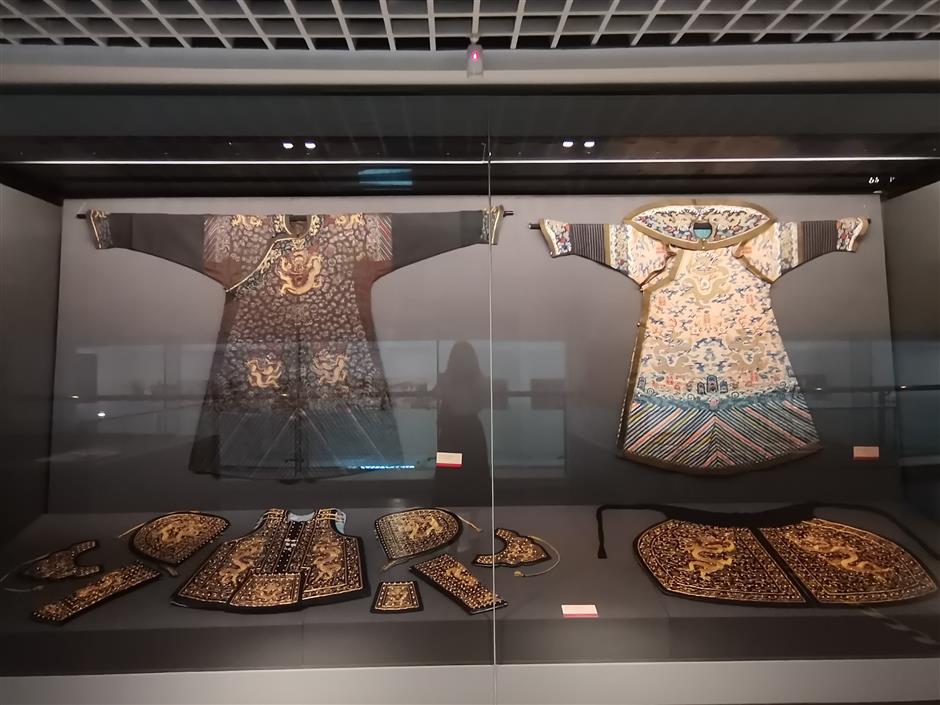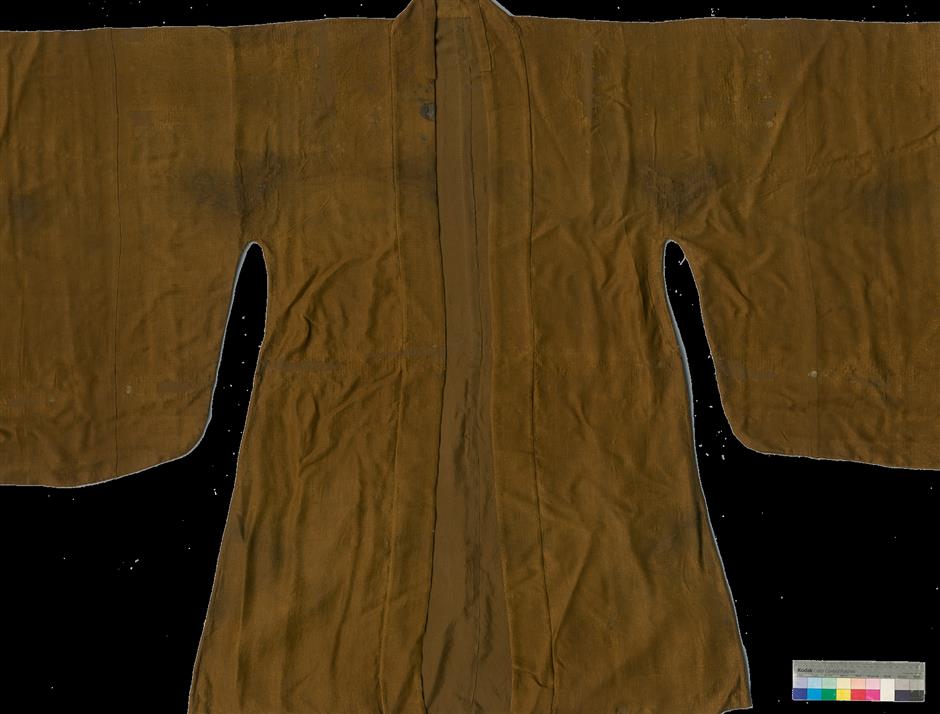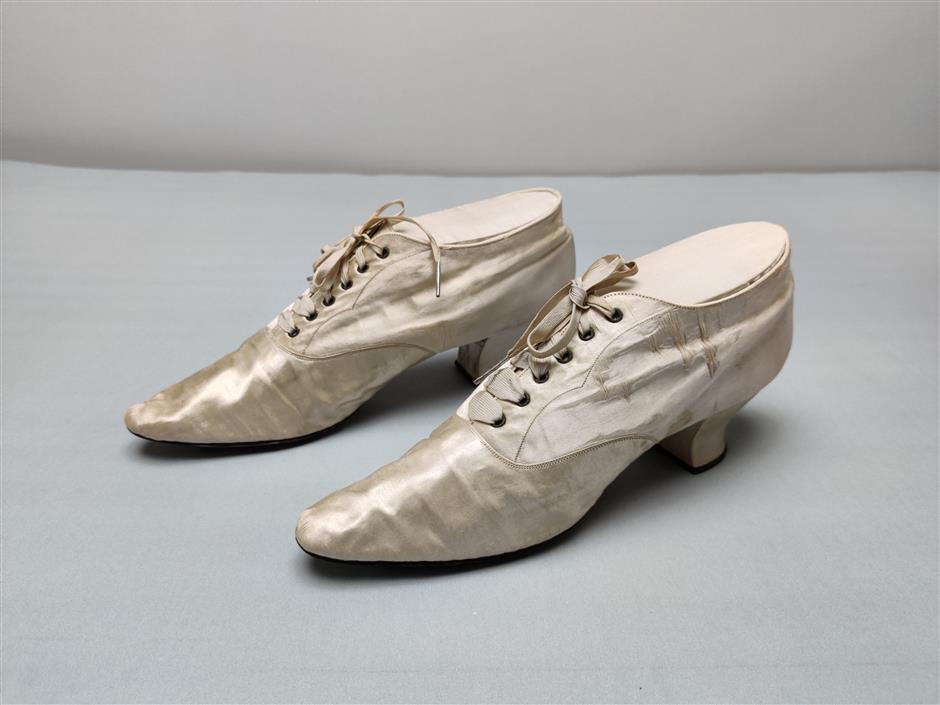- 中文
- EN
- Français
- 日本語
- 한국어
- 繁體中文
Restored treasures of thousands of years of Chinese silk clothing
China National Silk Museum has developed into the largest organization repairing ancient textiles in China, providing its services to more than 50 museums across the country.
During recent years, a number of top-notch treasures have been restored by experts from the museum in Hangzhou.
To commemorate the 30th anniversary of its establishment, it is hosting an exhibition chronicling its restored antiques from the Neolithic period to the Qing Dynasty (1644-1911). The exhibits give visitors an insight into the aesthetics of those ancient periods and an idea of how these ancient people dressed. Visitors can get close to the antique apparel and learn about the restoration methods.

Restored treasures of thousands of years of Chinese silk clothing
The Qing Dynasty imperial costumes that were restored by China National Silk Museum and Shenyang Palace Museum are on display.
The exhibition starts from a ball of carbonized silk that is on loan from Henan Provincial Institute of Cultural Heritage and Archeology. Last year, the institute unveiled a research in tandem with the silk museum, showing this ball of silk dating back to 5,000 BC, the earliest silk ever found in China.
The silk was unearthed from the Wanggou Relic Site in Zhengzhou, Henan Province. Wanggou is the largest relic site of the Yangshao Culture, which dates back to 7,000-5,000 BC. The carbonized silk shows that our Chinese forefathers were already producing silk from the Neolithic period.
Centuries ago, an entire silk production chain, including growing mulberry trees, breeding silkworms, producing looms and spinning, was formed in China
The displayed pieces of the Tang Dynasty (AD 618-907) luo (罗), a traditional Chinese textile of silk, unearthed from the Famen Temple in Shaanxi Province, epitomize the prosperity of silk production in ancient China.
However, due to the light, breathable, filmy and smooth features, luo is difficult to preserve.
Luckily, entire luo costume was discovered in De'an City, Jiangxi Province. In 1988, a well-protected Southern Song Dynasty (1127-1279) mausoleum with a mummy and a large number of textile products was unearthed in a construction site.

Restored treasures of thousands of years of Chinese silk clothing
A complete luo costume unearthed from a Southern Song Dynasty mausoleum in De'an City, Jiangxi Province
The tomb quickly caused a stir across the country. Whose tomb was it? When was the tomb dug? These questions lingered on in people's minds. After excavation and research, the answer was revealed – the tomb belonged to the wife of Wu Chou, a local official.
Silk costumes from most Southern Song Dynasty tombs were destroyed after being buried underground for centuries. Therefore, it is uncommon to unearth so many intact silk clothes from that era.
The mausoleum was layered with slabs and clay. Gaps between the coffin and the walls were filled with various materials, providing insulation from the searing heat, freezing cold and water. That special structure helped preserve the fragile luo for centuries underground.
Over 300 pieces of silk objects were found there, covering traditional jackets, coats, robes, trousers, pants, boots, shoes and accessories. They created a complete set of upper-class clothes, which is believed to be the largest discovery of the Southern Song Dynasty silk.

Restored treasures of thousands of years of Chinese silk clothing
A pair of brocade shoes from the West in the late 19th century
When ancient wealthy people died, their bodies wore layers of costumes according to local funeral rituals to reflect their social status and the hope of a luxurious afterlife. The mausoleum is a reflection of that tradition.
In recent years, De'an Museum partnered with the silk museum to repair these burial silks. Professionals considered them the epitome of silk products dating back 800 years. Their weaving techniques, patterns, motifs and designs provide archaeologists with ample materials to research ancient costumes.
The silk museum also collaborated with the Shenyang Palace Museum in restoring the Qing Dynasty imperial costumes. Some of the restored costumes are part of the exhibition.
Although the ornate textiles have lost their original glittering texture and colors centuries after they were made, the sophisticated, unique patterns and craftsmanship still denote the royal supremacy.
One robe embroidered with dragon motifs shows explicitly the emperor's monarchical power. In ancient Chinese culture, dragon patterns were exclusive to emperors, while phoenix patterns were for empresses.
Restorers who studied design and weaving technology of the time reproduced the original design, stitching techniques and embroidery as closely as possible.



